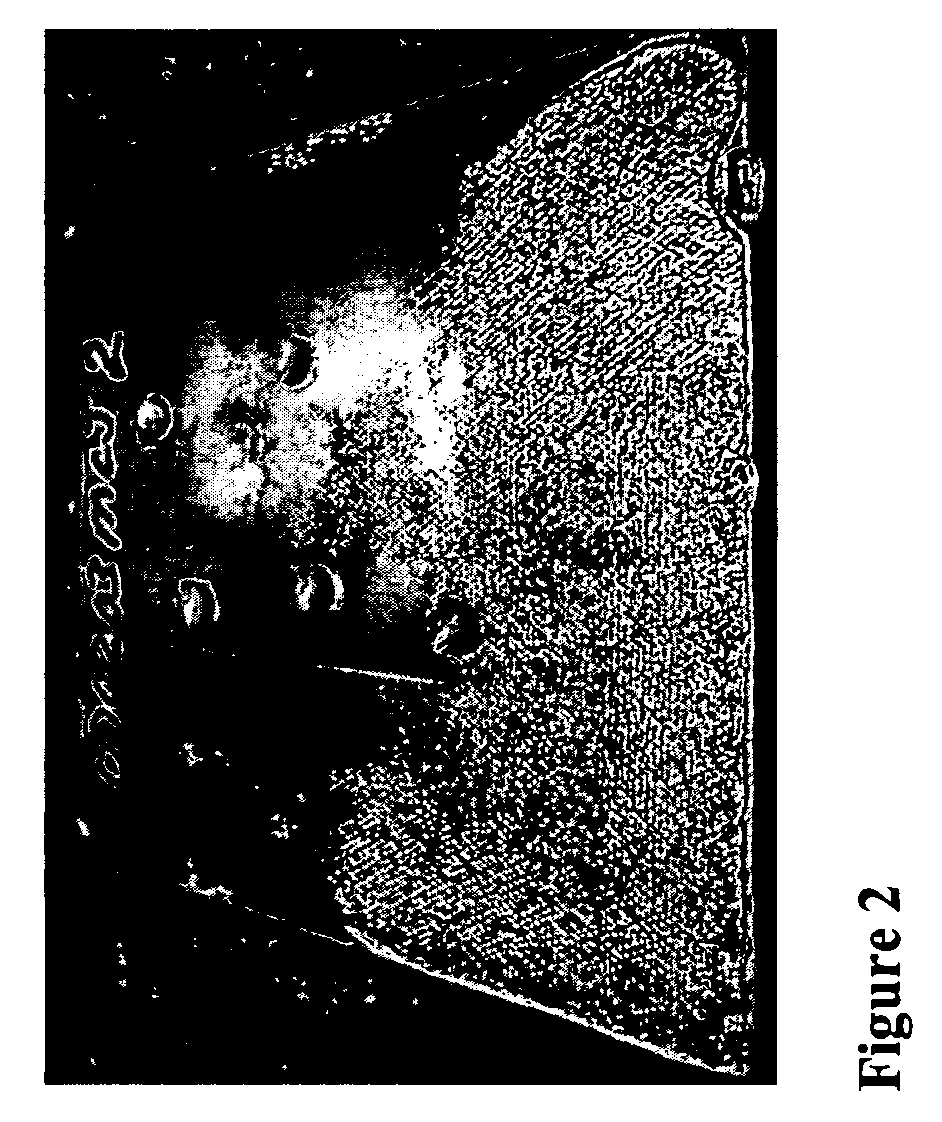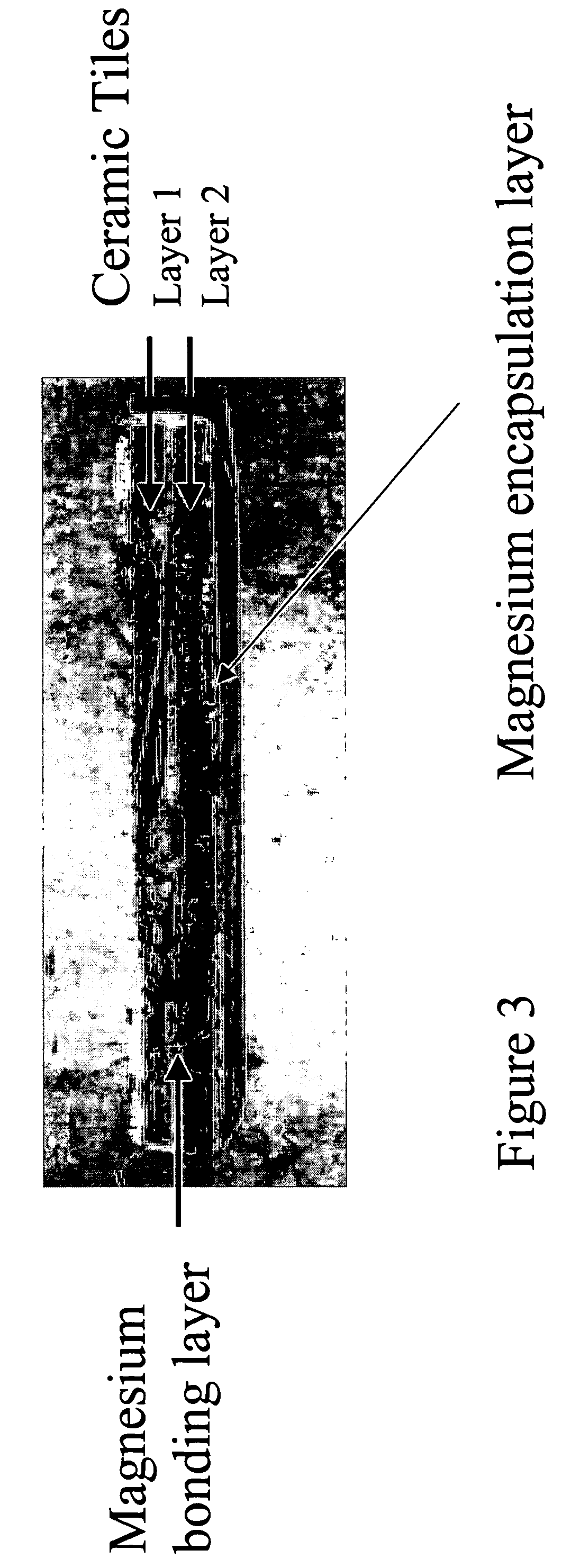Metal-ceramic materials
a technology of ceramic materials and composite materials, applied in the field of metal-ceramic composite materials and bodies, can solve the problems of reducing the ballistic protection of the entire armor system, reducing the and too easily defeating the armor, etc., to achieve the effect of improving the stiffness of ceramic materials, reducing internal tensile stresses, and superior multi-hit capability of the armor composi
- Summary
- Abstract
- Description
- Claims
- Application Information
AI Technical Summary
Benefits of technology
Problems solved by technology
Method used
Image
Examples
example 1
[0036]FIGS. 1a-c compare ballistic damage tolerance of hot pressed boron carbide (FIG. 1a), of encapsulated magnesium-boron carbide with carbon reinforcing fiber (FIG. 1b), and of encapsulated magnesium-boron carbide (FIG. 1c) with no carbon reinforcing fiber. Comparing FIGS. 1b and 1c to FIG. 1a shows the absence of apparent cracks in the composite tiles (FIGS. 1b and 1c) and the large number of cracks in the ceramic tile (FIG. 1a). Radial and circumferential cracks are nearly eliminated by the composite material, as shown in FIGS. 1b and 1c. Ballistic damage tolerance is improved by the supplemental procedure of wrapping and bonding carbon fibers onto the nonreinforced composite, as shown in FIG. 1b.
example 2
[0037] Ballistic test data is shown in Table II. The three different tile reinforcement configurations tested gave acceptable ballistic results, i.e., the measured V50 for each configuration was greater than the minimum of 2850 feet per second (fps) specified for SAPIs. The best result was a V50 greater than 3122 fps using a composite weighing 4.6 pounds per square foot (encapsulated magnesium-boron carbide). This best result was obtained for a stratified composite of a balanced construction of an encapsulated magnesium-boron carbide tile reinforced with ceramic fibers on the front and back surfaces.
TABLE IIConstructionV50 (fps)*Encapsulated magnesium-boron carbide reinforced with>3122short ceramic fibers on both sides.Encapsulated magnesium-boron carbide reinforced with3025short ceramic fibers only on back (non-impact) side.Encapsulated magnesium-boron carbide reinforced with2950carbon fibers on both sides.
*V50 is the projectile velocity at which the probability of stopping the p...
example 3
[0038] Table 3 shows ballistic test results for two different encapsulated magnesium-boron carbides and a non-encapsulated magnesium carbide, each with same polymer fiber reinforcement setups.
TABLE IIIBacking BulgeImpactSetupMetalCeramicFiber BackingTest ResultHeight (in.)Trauma1Mg 0.125Boron27 layersDefeat 4 shots0.9Lowin. thickcarbide2Mg 0.6 in.Boron27 layersDefeat 4 shots1.25Mediumthickcarbide3NoneBoron49 layersDefeat 4 shots1.50Very highcarbide
[0039] It clear from the result that the encapsulated composites are able to defeat ballistic impact with minimal impact trauma (e.g. reduced backing bulge) when compared to the ceramic without encapsulation.
PUM
| Property | Measurement | Unit |
|---|---|---|
| thickness | aaaaa | aaaaa |
| weight | aaaaa | aaaaa |
| shrinkage | aaaaa | aaaaa |
Abstract
Description
Claims
Application Information
 Login to View More
Login to View More - R&D
- Intellectual Property
- Life Sciences
- Materials
- Tech Scout
- Unparalleled Data Quality
- Higher Quality Content
- 60% Fewer Hallucinations
Browse by: Latest US Patents, China's latest patents, Technical Efficacy Thesaurus, Application Domain, Technology Topic, Popular Technical Reports.
© 2025 PatSnap. All rights reserved.Legal|Privacy policy|Modern Slavery Act Transparency Statement|Sitemap|About US| Contact US: help@patsnap.com



